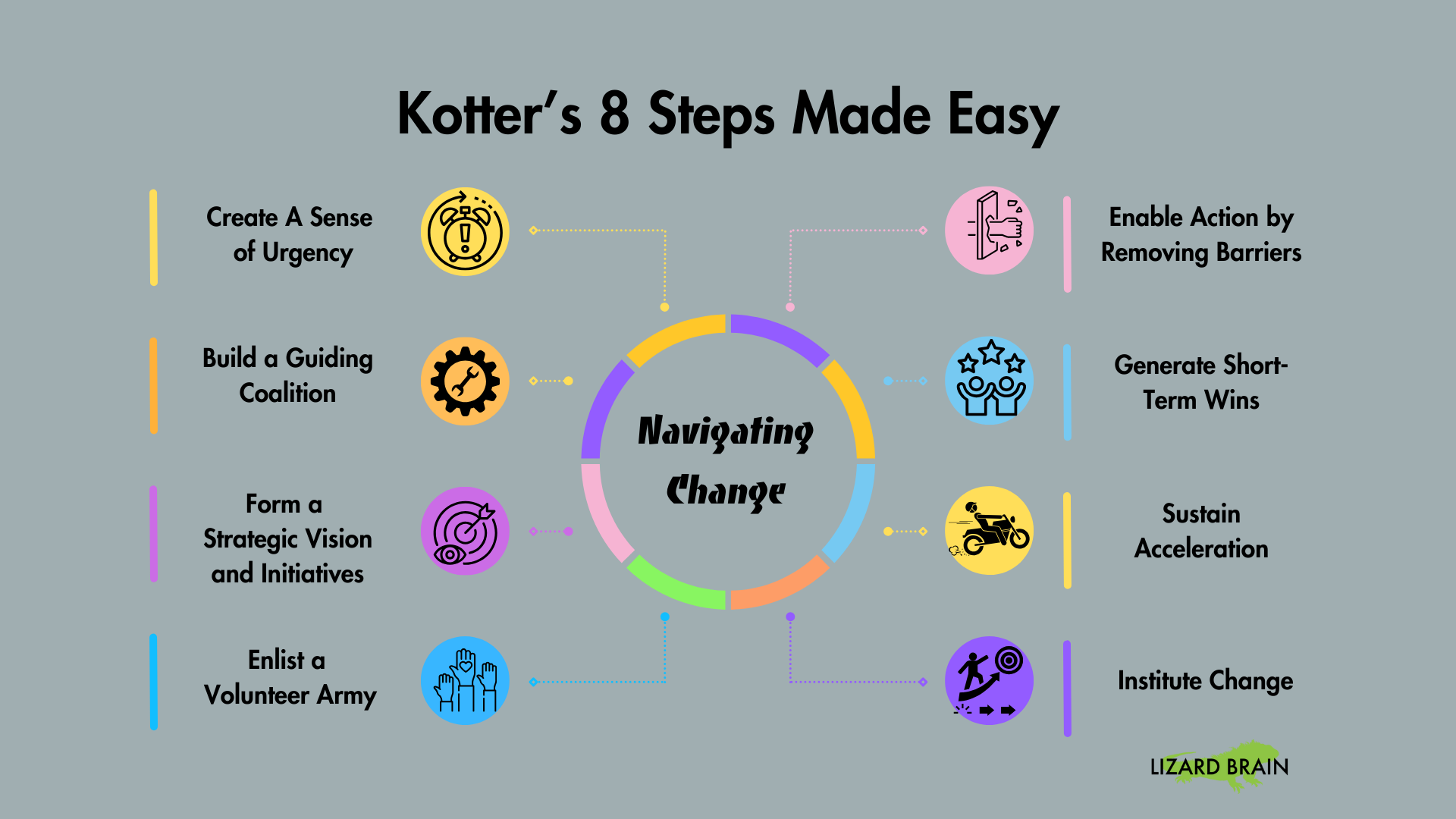Navigating Change: Kotter's 8 Steps Made Easy
Kotter’s 8 Steps Made Easy. Infographic by Chris Cushing
Change is a big part of life, especially in business. Sometimes it can feel like flying blind. But don't worry: John Kotter has 8 steps to help prepare for and manage change.
Create a Sense of Urgency
Why change? What’s driving it? The sense of urgency is driven by dissatisfaction with the current state, or an awareness of trends that will lead to seismic shifts.
You often hear the term “burning platform” thrown around. I never liked that term. It refers to a story where an offshore oil rig caught fire, workers were faced with the choice to either jump into the ocean or stay and get burned alive. Choices like that are never going to result in long term behavioral change. Whatever your case for change, it has to be clear, and it has to be backed up with evidence
Build a Guiding Coalition
Who are your early adopters? They’re your influencers that will sway the early majority. They’re the ones to focus on. Engage with them early and often. Be clear on the change, and their role in it. And be careful not to confuse early adopters with cutting edge innovators. Innovators are probably already onboard, if not way out ahead of you.
Form a Strategic Vision and Initiatives
Paint as vivid a picture as you can of what your vision of the future success looks like. Be clear, be specific, and be sublime. Imagine a future point in time when the change has happened and your organization is reaping the rewards. Describe that future. If you need help articulating your vision, consider illustrating it using a Lizard Brain vision map, our rich illustrations of future success.
Enlist a Volunteer Army
Now it’s time to roll out the change to the early majority. The more hands, the lighter the work. Have a kick off. Announce the change with fanfare, and with action. Get everyone excited and involved helps the change happen. Extend an invitation to get on board with the change.
Enable Action by Removing Barriers
Make sure your lines of communication with the innovators, the early adopters, and the early majority are open and information flowing freely. They’ll find barriers and challenges you could never have anticipated. Resolve those obstacles quickly. Remove what's in the way to build early momentum.
Generate Short-Term Wins
Use those open channels of communication to find and celebrate small wins. Recognizing short-term wins is just as important as anything else you do to sustain change: it reinforces the behaviors you’re looking for. Take the time to find, celebrate, and communicate early progress.
Sustain Acceleration
At this point, hopefully the change has hit a tipping point, and you’ll start to see evidence of the change taking hold in the late majority. Keep the momentum going. Highlight what’s going well and stay focused on the goal. Don't slow down or get distracted. Perseverance and momentum matters more than perfect execution.
Institute Change
Take stock of the organizational structures and functions that need to shift to support the change. Are there policies or procedures that need to be updated? Do new skills need to be trained or recruited for? Are there updates to technologies, like new hardware to acquire or new software configurations? Does the criteria for performance review need to change? Do customers and suppliers need to be informed or persuaded? What other enablers need to change?
Enjoy the Journey
Kotter's 8 steps are like a map for change. They help plan for and guide the change and make sure it sticks. What’s a change you’re facing? Whether it’s small or big, Kotter’s guide is a useful framework to get started and keep it going. So gather your team and enjoy your change adventure! Contact Lizard Brain today to help paint a picture of your future vision and the change that will lead to it.

